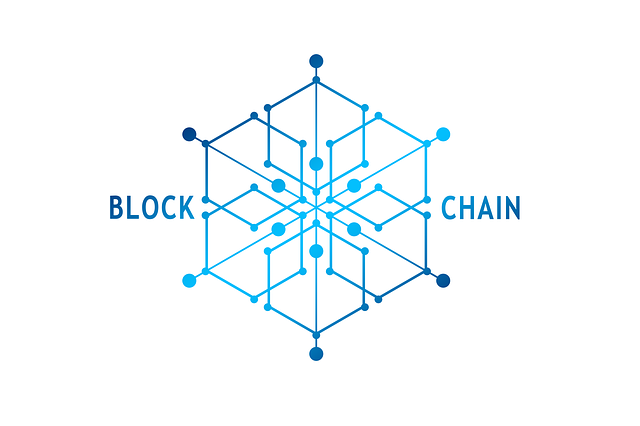Bitcoin Blockchain Technology
What is Bitcoin?
Bitcoin is a digital currency that operates without the need for a central authority or intermediary. It is decentralized and operates on a peer-to-peer network, allowing for direct transactions between users without the involvement of banks or governments. Created in 2009 by an unknown person or group of people using the pseudonym Satoshi Nakamoto, Bitcoin has gained significant popularity and has been recognized as a revolutionary form of currency.
Utilizing a technology called blockchain, Bitcoin transactions are recorded on a public ledger that is maintained by a network of computers known as miners. These miners validate and secure transactions by solving complex mathematical puzzles, ensuring the integrity and immutability of the blockchain. Bitcoin has a limited supply cap of 21 million coins, making it a deflationary asset with a fixed supply that cannot be manipulated by any central authority.
History of Bitcoin
Satoshi Nakamoto, the mysterious figure behind the creation of Bitcoin, introduced the world to the concept of a decentralized digital currency in 2008. The publication of the Bitcoin whitepaper titled “Bitcoin: A Peer-to-Peer Electronic Cash System” marked the beginning of a new era in the financial landscape. With the first block of the Bitcoin blockchain, known as the genesis block, being mined in January 2009, Bitcoin became the pioneer of cryptocurrencies, revolutionizing the way we perceive money and transactions.
The early years of Bitcoin were characterized by skepticism and uncertainty as people struggled to grasp the potential of this innovative technology. However, as the years passed, Bitcoin gained traction and popularity among tech enthusiasts, libertarians, and investors. The journey of Bitcoin has been marked by dramatic price fluctuations, regulatory challenges, and technological advancements, all of which have contributed to shaping the narrative of this groundbreaking digital asset.


What is Blockchain Technology?
Blockchain technology is a decentralized, distributed ledger that records transactions across a network of computers. It relies on cryptographic principles to ensure the security and integrity of the data stored within it. Each block in the blockchain contains a list of transactions, a timestamp, and a cryptographic hash linking it to the previous block, forming a chain of data that cannot be altered retroactively.
One of the key features of blockchain technology is its transparency, as every participant in the network has access to the entire blockchain. This transparency helps to establish trust among users, as they can verify the validity of transactions independently. Additionally, blockchain technology eliminates the need for intermediaries in transactions, reducing costs and streamlining processes.
How does Blockchain work?
The operation of a blockchain is a intricate process that revolves around a network of individual nodes, each containing a copy of the entire ledger. When a new transaction is initiated, it is broadcasted to all nodes on the network. The nodes then validate the transaction using complex cryptographic algorithms. Once confirmed, the transaction is grouped together with other validated transactions to form a block. This block is then added to the chain of existing blocks, creating a chronological and immutable record of transactions.
Blockchain technology relies on consensus algorithms to ensure that all nodes on the network agree on the validity of transactions. This agreement mechanism eliminates the need for a central authority and enhances the security and trustworthiness of the system. Various consensus mechanisms, such as Proof of Work and Proof of Stake, are employed to achieve this agreement among nodes. Through this decentralized and transparent process, blockchain enables secure, efficient, and tamper-resistant transactions without the involvement of intermediaries.


Key features of Blockchain
In the realm of technological advancements, the key features of blockchain technology stand out prominently. One significant attribute is its transparent nature; transactions recorded on a blockchain are visible to all participants in the network. This transparency fosters trust and accountability among users, as any alterations made to the data can be easily detected through consensus mechanisms and cryptographic hashing.
Moreover, blockchain’s decentralized structure eliminates the need for a central authority to validate transactions. Each participant in the network plays a crucial role in validating and verifying transactions, ensuring a distributed consensus is reached. This decentralization not only enhances security by reducing the risk of a single point of failure but also promotes inclusivity and democratization in the digital landscape.
• Blockchain technology is transparent, allowing all participants in the network to view transactions
• Transactions on a blockchain are secure due to consensus mechanisms and cryptographic hashing
• Decentralized structure eliminates the need for a central authority to validate transactions
• Each participant plays a role in validating and verifying transactions, ensuring distributed consensus
Decentralization in Blockchain
Decentralization in blockchain refers to the concept of distributing control and authority across a network of nodes, rather than relying on a central authority. In a decentralized system, no single entity has complete power over the network, promoting transparency and resilience. This distributed nature of blockchain helps in securing the network from single points of failure and malicious attacks, making it more trustworthy and reliable.
One of the key advantages of decentralization in blockchain is the elimination of intermediaries in transactions. By utilizing a peer-to-peer network, blockchain enables users to directly interact with one another, reducing the need for third-party mediators. This not only streamlines processes but also lowers transaction costs and minimizes the risk of manipulation or censorship. The decentralized nature of blockchain technology empowers individuals to have greater control over their own assets and data, fostering a more democratic and inclusive digital economy.
Security in Blockchain
Blockchain technology is often lauded for its robust security features, which are achieved through cryptographic algorithms and decentralized consensus mechanisms. Each block contains a timestamp and a link to the previous block, creating a chain that is practically immutable. The use of public and private keys ensures secure transactions, with each party needing their own unique key to validate and authorize transactions on the network.
One of the key aspects of security in blockchain is the concept of decentralization. By distributing the ledger across a network of nodes, there is no central point of failure that can be exploited by malicious actors. This distributed nature not only enhances security but also increases transparency and trust in the system. Additionally, blockchain’s consensus mechanisms, such as Proof of Work or Proof of Stake, further strengthen security by ensuring that transactions are validated by the network before being added to the blockchain.
Consensus mechanisms in Blockchain
Consensus mechanisms play a crucial role in the operation of a blockchain network. These mechanisms are designed to ensure that all participants in the network agree on the validity of transactions before adding them to the blockchain. By utilizing various algorithms such as Proof of Work (PoW), Proof of Stake (PoS), Delegated Proof of Stake (DPoS), and others, blockchain networks are able to achieve consensus in a decentralized manner.
Each consensus mechanism has its own unique set of advantages and limitations. For example, PoW, the mechanism used in the original Bitcoin blockchain, is known for its robust security but requires significant computational power and energy consumption. On the other hand, PoS mechanisms offer a more energy-efficient alternative, where validators are chosen based on the number of coins they hold. DPoS mechanisms, such as those used in platforms like EOS and Tron, rely on a selected group of delegates to validate transactions, allowing for faster transaction speeds but potentially sacrificing some level of decentralization. Ultimately, the choice of consensus mechanism depends on the specific goals and requirements of a blockchain network.


Smart Contracts in Blockchain
Smart contracts are self-executing agreements with the terms of the contract directly written into the code. These contracts automatically enforce and facilitate the negotiation or performance of a contract without the need for intermediaries, creating trust and transparency in transactions. The use of smart contracts in blockchain technology ensures that agreements are carried out efficiently and securely, eliminating the need for third-party involvement in contract execution.
One key advantage of smart contracts is their ability to reduce transaction costs by cutting out middlemen and streamlining the contract process. By automating the execution of agreements, smart contracts can increase the speed of transactions while reducing the risk of fraud or tampering. This innovative feature of blockchain technology has the potential to revolutionize industries such as finance, real estate, and supply chain management by enabling secure, seamless, and cost-effective contract execution.
Use cases of Blockchain
Blockchain technology has found a myriad of applications across various industries. One notable use case is in supply chain management, where the technology enables transparent and secure tracking of products from their origin to the final consumer. By recording each step of the supply chain on a decentralized ledger, stakeholders can verify the authenticity and provenance of goods, ensuring compliance with regulations and reducing instances of fraud.
Another significant application of blockchain is in the realm of healthcare. The technology allows for the secure storage and sharing of patient data, ensuring privacy and data integrity. With blockchain, healthcare providers can access a patient’s complete medical history from various sources in real-time, facilitating accurate diagnosis and personalized treatment plans. Additionally, blockchain can streamline the process of sharing medical records between different healthcare providers, ultimately improving patient care and outcomes.
Challenges facing Blockchain technology
Blockchain technology faces several challenges that hinder its widespread adoption and integration across various industries. One of the primary concerns is scalability, as the current infrastructure struggles to handle a large number of transactions simultaneously. This limitation leads to slower processing times and increased fees, making it less efficient for mass usage. Additionally, the energy consumption associated with mining cryptocurrencies, especially Bitcoin, raises environmental concerns and questions the sustainability of blockchain technology in the long run.
Another significant challenge is regulatory uncertainty, with different jurisdictions implementing varied approaches towards blockchain and cryptocurrencies. The lack of uniformity in regulations hampers the development and growth of blockchain projects, creating obstacles for businesses looking to leverage this technology. Moreover, the issue of data privacy and security remains a prominent concern, as blockchain systems are not entirely immune to cyber attacks and breaches. Addressing these challenges is crucial for the successful mainstream adoption of blockchain technology in the future.
Future of Blockchain
As the adoption of blockchain technology continues to grow, the future landscape of this innovative technology holds immense potential for transformation across various industries. Industries such as supply chain management, healthcare, finance, and real estate are actively exploring how blockchain can streamline processes, enhance transparency, and improve security. The integration of blockchain in these sectors could lead to increased efficiency, reduced costs, and greater trust among stakeholders.
Moreover, with ongoing research and development in blockchain scalability, interoperability, and sustainability, we can expect to see further advancements in the technology. Innovations such as sharding, sidechains, and energy-efficient consensus mechanisms are paving the way for a more robust and accessible blockchain ecosystem. As blockchain continues to evolve, it has the potential to revolutionize how data is managed, transactions are conducted, and trust is established in a digital age.
Benefits of Bitcoin Blockchain Technology
Bitcoin blockchain technology offers numerous advantages to users and industries worldwide. One significant benefit is transparency, as every transaction conducted on the blockchain is recorded and can be viewed by anyone. This transparency helps to foster trust among parties involved in the transaction, reducing the risk of fraud and ensuring accountability.
Another key benefit of Bitcoin blockchain technology is decentralization. Unlike traditional centralized systems, the blockchain operates on a peer-to-peer network, eliminating the need for intermediaries such as banks or payment processors. This decentralization not only reduces transaction costs but also enhances security by distributing data across multiple nodes, making it resistant to hacking or manipulation.